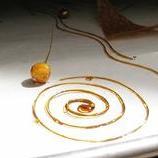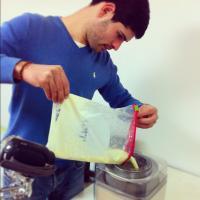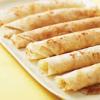Search the Community
Showing results for 'wok'.
Found 5,159 results
-
Ah, I see. I wasn't sure whether you ended up going with the 25 minute method for the salted caramel. Interesting that the recipe took an hour to make. How long does the reduction process take in your 9" wok? I would recommend that you keep your mix at around 72°C for at least 25 minutes, even if you reach the desired reduction weight before then. The aim of the heating process is two-fold: 1. is to concentrate the mix, thereby increasing the non-fat-milk-solids, primarily the protein, which significantly contributes to smooth texture, and 2. to promote reversible protein unfolding, which, again, significantly contributes to smooth texture. If you don't heat for at least 25 minutes, you are unlikely to get the same rate of reversible protein unfolding and I'm certain that the texture won't be as smooth and creamy.
-
Have you tried the new 25 minute heating recipes on the blog Jim? ========== Yes, that is the recipe I use. Remember, you suggested I use the caramel ingredients but the 25-minute vanilla technique? The problem is that it took over an hour to reach the target weight for the caramel. All of the other recipes have taken about 45 minutes, except when I used a (non-stick) wok for heating--it was much wider and cut the time dramatically. But with the wok I could not use my probe thermometer from Thermapen that I bought specially for this purpose--the sloping sides of the pot didn't allow the probe to be beneath the surface of the mix. I am now looking for a 9-inch pot (stupidly I used my 9-inch enamel pot for making no-knead bread, and the high heat has ruined it for anything else).
-
If your food is burning in seconds, your wok is too hot. Simple. Most Chinese cooks will heat the empty wok then add oil and the garlic/ginger and briefly fry, keeping it moving all the time, then, when it smells fragrant, immediately add your meat or whatever. Again keep stirring and it shouldn't burn. If you really do think something is about to burn, add just a small splash of water - not cold oil. It will evaporate almost immediately but save your food from burning. Then turn the heat down.The idea that all wok cooking is done at full heat is a myth.
-
This. You don't want to dice or mince the garlic/ginger. Just mash the garlic clove/so it's broken open (use slices of ginger), stir fry that and then remove it from the oil before it burns. If it burns the second you put it in the oil/wok, then it's far too hot. Start on a lower heat to flavor the oil. Remove the garlic and/or ginger. Once that's done, crank up the heat and start the stir fry. Make sure you use a high smoke point oil (like peanut) for your stir fry..
-
If it's literally a few seconds, I wonder if your wok is too hot. I'd lower the heat for that step -- and in any event, you probably wouldn't stir-fry them w/o other ingredients for more then 15-20 seconds, yes? In some recipes, like this one, you add the garlic/ginger then immediately add some sauce and liquid. Sometimes you might even mix them together ahead of time, like here. And yes, I'm pointing you in the direction of hzrt8w's wonderful pictorials on eG.
-
I'm sure someone who does more wok cooking will reply and give you a better answer, but this is my approach. I put oil in the pan/wok, add garlic and then heat it gently long enough that the oil is somewhat infused with the garlic. Then I remove the garlic and heat the oil for the actual stir fry.
-
I've always wondering about this. Just abut every Chinese cookbook I own, says to heat the wok to the highest setting available (I use an electric cooktop with a flat bottomed wok), add the oil and when it begins to smoke, add the garlic (and ginger if required). Everytime, the garlic burns in a matter of seconds. So, I turn the heat down low enough so the garlic doesn't burn, but I was under the impression that you want a very high heat to a. sear the meat, b. cook the vegetables quickly so they remain crisp tender, and lastly, c. evaporate the water out of the added sauce to concentrate the flavor. Any commnets or suggestions? What do you do?
-
And another repost Despite being almost in the tropics (the Tropic line is just down the road), it can get quite cold here. Every year, around now, the temperature suddenly drops overnight from the mid to high 20s (ºC) to around 12 - 15ºC. I know that may not seem cold to many people, but please note that few house or offices etc have any heating. We simply throw on more clothes for the duration. By February, it will be down to 5-10º. Fortunately, winter is short. Anyway the drop came a couple of night ago so I made this. A one pot stew of beef with chickpeas, garlic, onion, carrot, celery, ginger, chillies, Worcestershire sauce. With new potatoes (Also cooked in the same pot). Winter food. In the wok
-

Need Ideas for a Pescatarian (or Vegetarian) Christmas Menu
Lisa Shock replied to a topic in Cooking
I love tempura. However, I find that unless one eats it immediately, texture can suffer. I have never successfully made it for more than a couple of people at a time because only so much fits in my wok at one time without dropping the oil temp too much. Unless your party plans include a cook standing at the stove while everyone else eats, I don't recommend it. -
One tip that is often missed is to dry the steaks when you take them out of the bag prior to searing. If you don't do this, the sear will not work properly. After drying I rub in oil and salt and put the steak on a searing hot pan (as hot as you can get it and preferably on a wok burner) -- don't use non-stick as the high heat will denature the surface. Edited to change run (typo) to rub.
-
This is the lore, I know, but in truth it just makes the wok slightly easier to clean. And there's no difference in practice between seasoning applied over many years and seasoning done efficiently in 20 minutes. Ain't no magic going on! The woks used by professional Chinese cooks have virtually no seasoning; they get preheated hot enough to burn off any old oil every time they cook. Jeans are another story
-
Section 4 - 水产类 Aquatic Products Given that Hunan is a landlocked province, it may be surprising to learn that this section is by far the longest in the book. Despite the lack of sea, the province has more than its fair share of water. It is bounded to the north by the Yangtse and China's second largest freshwater lake, Dongting Lake. Indeed Hunan means' south of the lake. It also has an extensive network of rivers. Most of the fish here is river or lake fish; some farmed, some wild. There are also, however, recipes which call for sea fish or seafood. In a fresh form these are a new addition to the cuisine, although dried seafood and fish has been making its way inland for a long time. 113 金毛狮子鱼 Golden Mane Lion Fish 114 外婆家鱼头 Grandmother’s Family Fish Head 116 油泼酸汤鳜鱼 Oil Sprinkled Sour Soup Mandarin Fish 117 气锅海参 Gas Pot Sea Cucumber 118 干煸金鳅 Dry Fried Golden Loach 119 蒜烧鮰鱼 Garlic Fried Catfish 120 三湘鮰鱼 Hunan Bullhead Catfish 121 焦熘虾 Char-Fried Shrimp 121 香辣小鲫鱼 Spicy Baby Crucian Carp 122 双味牛蛙 Two Flavour Bullfrog 122 灌汤鱼丸 Fish Balls for Soup 123 开屏武昌鱼 Tail Spreading Blunt Nose Bream The fish is cut to resemble (vaguely) a peacock displaying its tail. 124 金牌水煮鱼 Gold Medal Water Boiled Fish This may sound boring, but in fact the fish (Grass Carp) is cooked in a fiery, flavorful broth. One for chili lovers. Not exclusive to Hunan. It also features in Sichuan cooking. 125 鱼杂钵子 Mixed Fish Alms Bowl 126 农家蒸酢鱼 Peasant Family Steamed Vinegar Fish 127 麻辣香脆虾 Hot and Numbing Crisp Shrimp 128 白椒蒸火焙鱼 White Pepper Steamed Baked Fish 129 茶香河虾 Tea Flavour River Shrimp 129 腊肉蒸河蟹 Steamed River Crab w Cured Pork 130 擂辣椒炒火焙鱼 Crushed Chili Fried Baked Fish 130 上汤焗龙虾 Steam Baked Lobster The lobster is steamed over a clear stock. 131 霸王牛蛙 Ba Wang Bullfrog Bawang is but one name given to the Qin Dynasty Emperor Xiang Yu (232–202 BC). It means ‘overlord’ or ‘conqueror’. Maybe he had a penchant for frogs? 132 铁板鱿鱼 Iron Plate Squid 133 鱼杂黄鸭叫 Yellow Catfish with Fish Mix 134 石烹醉河虾 Drunken River Shrimp 135 面包基围虾 Breadcrumb Shrimp 136 干锅扇贝肉 Dry Pot Scallops 138 香辣多宝鱼 Spicy Turbot 139 船娘小炒 Boat Mother’s Stir Fry 140 韭菜辣炒河蚌 Spicy River Mussels w Garlic Chives 142 鱼米之乡 Land of Plenty Carp, Peas and Sweetcorn Kernels 143 白辣椒烧鳜鱼 Stewed Mandarin Fish with Chili 144 鸿运当头 Swan Goose Bearing Promises Actually, fish head with chilies 145 豆腐炖河鳗 Stewed River Eel with Tofu 146 汤浸江团 Poached River Fish 147 风吹肉炖泥鳅 Stewed Loach with Wind Dried Pork 148 平锅鱼头 Flat Pan Fish Head Unusually for China, this is cooked in a frying pan or skillet instead of a wok. 149 葱香黄焖鳜鱼 Onion Flavour Boiled Mandarin Fish 150 海鲜串串香 Sea Food Skewers Grilled river clams and razor clams. Served with a pickled red chili sauce 151 干锅鱼嘴 Dry Pot Fish Mouth The front half of the head 152 青椒炒鱼头 Green Pepper Fried Fish Head 153 香酥金丝虾 Crisp Golden Thread Shrimp 154 回锅黄玉参 Twice Cooked Sea Cucumber 155 簸箕鱼 Dustpan Fish This is a simple, but tasty dish of small river fish with wind-dried pork. 155 酱椒口味田螺肉 River Snail Meat in a Chili Sauce. 156 绿茶鱼米 Chopped Fish with Green Tea 157 鳝鱼牛蛙煲 Eel and Bullfrog Pot 158 口味牛蛙 Tasty Bullfrog 159 吊锅腊味鳝鱼 Hanging Pot Cured Eel 160 石锅泡菜牛蛙 Stone Pot Bullfrog with Pickles 161 宫保牛蛙腿 Kung Po Bullfrog Legs 162 竹筒蒸田螺肉 Bamboo Tube Steamed River Snails 163 黄焖野生龟 Boiled Wild Turtle 164 肥牛千岛虾 Thousand Island Shrimp with Fatty Beef Not that foul salad dressing in a bottle. It is little cakes which, on the plate, look like islands. 164 鲜捞鲍脯 Dredged Abalone Meat 165 浏阳腊鱼蒸腊肉 Liuyang Steamed Cured Pork and Cured Fish 165 咸鱼蒸肉饼Steamed Salt Fish Cakes 166 五彩蛇丝 Five Colour Snake Strips 167 野芹菜炒鳝鱼 Countryside Eel with Celery 168 干锅腊牛蛙 Dry Pot Cured Bullfrog 169 酸辣金丝绣球 Hot and Sour Golden Thread Embroidered Balls 170 鳜鱼肉丸火锅 Mandarin Fish and Meatball Hot Pot 171 鱼羊一锅鲜 Fish and Goat Hot Pot 172 鲜鲍煨寒菌 Stewed Abalone and Mushrooms 173 芸豆墨鱼炖肚 Tripe with Beans and Cuttlefish 174 土锅龟羊汤 擦 Clay Pot Turtle with Goat Meat Next up is the final and shortest section. I may even finish it today. Vegetables
-
Thanks! Well, we really love to switch around cuisines to keep it interesting. A great bowl of slow cooked chili, a nice andouille gumbo, a Moroccan lentil soup, a hearty posole, a bowl of tonkatsu ramen or a nice well simmered Pho; any of these made well would satisfy me equally. However, if there is 1 cuisine that both my wife and I love, It'd be Thai cuisine. We'd go weak in the knees eyeing a nicely charred Pad Kee Mao basking in the glory of its wok hei or even a flavorful Pad Gra Prao. There are several foods typical to Mumbai that aren't made as well anywhere in the rest of India, let alone in the United States. For instance the vada pav is classic Mumbai street food; a sandwich or actually a slider involving a potato patty aka 'batata vada' placed between a soft very mildly sour and very slightly chewy 'pav'. There are several variations of the 'vada' itself but it is the pav that no one outside of Mumbai has managed to nail down. The pav is akin to a dinner roll; is of Portuguese origins and depending on your street vendor, sweet and spicy chutneys are added on and other fixings like fried chillies. The food we typically cook and eat at home most often is quite unlike hat's available at Indian restaurants here. We are originally from a coastal region south of Goa and we eat what's known as Saraswat Konkani cuisine. The cuisine is coincidentally vegetarian (or even vegan). However, seafood is pretty common as is consumption of tons of freshly scraped coconut (not coconut milk) for use in curries. As far as cooking other cuisines go, the last I cooked from one my of cookbooks was a couple of recipes from Ottolenghi's book 'Plenty' and from Fuschia Dunlop's "Land Of Plenty". I meant the ex-cast iron stomach in reference to eating off the street food stalls of Mumbai. I still do that on my trips back home but these days am likely to suffer the following morning!
-
I agree with all of the above you you can season it ..or depending on how fast you want it "old" you can just use it and use it and use it then when you are done each thing you just wipe it or gently wash it put some oil on it and stick it back on the burner to dry it ..give it a "story" let it age ..do not push it ..time …patience …and over and over and over ..seasoning takes time and usage ..agreed not over thinking….at least for me ..to get that nice slick surface takes age… that is how I season anything "new" I age it naturally by using it ..your food gets better over time as your wok ages..I have an old old wok that was purchased new and it was a mess when I started but as I seasoned it it took on my character of cooking ..I believe that seasoning is also unique to the person using it and the best things are left to season naturally over time and usage …like a good pair of jeans! or I just realized this second…my 37 year marriage this month is nicely seasoned with time the things I have slowly seasoned have been the things I have kept in life!
-
All good advice above - and don't overthink it. The wok will get seasoned fine from almost any preparation and progress from there the more you cook in it. It's hard to go wrong.
-
The principle is exactly the same as with a cast iron skillet: you're polymerizing oils (which means heating them to the point where they oxidize and turn to a tough plastic consistency) and carbonizing them (which means burning some of the oil to soot, which embeds in the polymerized oil and gives the nonstick characteristics). This will happen on its own just from using a wok. If you're in a hurry, you can fully season the thing in 20 minutes or so if you're efficient about it. You need an oil that's high in unsaturated fats, preferably in polyunsaturated fats, and that's highly refined so that it can take high heat. Look for something a refined canola or safflower oil. Put a VERY THIN coating on the pan, and heat the wok. You can use a powerful burner, or else put the wok in an over (for more even results). If using the oven, I set the temp to around 25°F higher than the smoke point of the oil. When the oil stops smoking, take a piece of paper towel dipped in the oil and paint another thin coat on the pan (use tongs!). Repeat. After a few cycles of this, the wok will have an even, black, durable coating. This is the same as for cast iron. Just be aware that spun steel is less porous than cast iron, so the coating will be less durable. Also be aware that if you use the wok at true stir-fry temperatures (like with a commercial wok burner) this is probably a pointless exercise because you'll burn the coating off the wok every time you use it. Any instructions you find that mention using salt, or any kind of food, or saturated fats like shortening, are based on pure folklore. There's nothing scientific or practical to recommend any of that.
-
Hi liuzhou, Do you know this one ? Sichuan(China) Cuisine in Both Chinese and English 中国川菜(中英文标准对照版) ISBN-10: 7536469640 《中国川菜(中英文标准对照版)》重点介绍了180道经典四川菜点的制作方法,全书采用中英文对照的编排方式,是目前国内第一本大型的中英文标准版的地方风味精美图文集。《中国川菜(中英文标准对照版)》的制作团队囊括了国内外饮食文化研究领域的一流专家、川菜烹饪大师、摄影名师等,由此确保了《中国川菜(中英文标准对照版)》内容的权威性。《中国川菜(中英文标准对照版)》文字简洁明了,图片美观精致,翻译标准规范,特别是180道经典四川菜点的制作方法,可供感兴趣的中外读者亲自操作实践,《中国川菜(中英文标准对照版)》具有很高的可读性、观赏性、实用性和指导性。 Content: 封面 扉页 版权页 目录 第一篇 开胃菜 Appetizer 五香牦牛肉 Five-Spice-Flavored Yak Beef 四味鲍鱼 Four-Flavor Abalone 葱酥鱼 Crispy Scallion-Flavored Fish 怪味鸡丝 Multi-Flavored Chicken Slivers 椒麻鸡 Jiaoma-Flavor Chicken 白宰鸡 Baizai Chicken 花椒鸡丁 Sichuan-Pepper-Flavored Chicken 泡椒凤爪 Pickled-Chili-Flavored Chicken Feet 钵钵鸡 Bobo Chicken 腊味拼盘 Cured Meat Platter 卤水拼盘 Assorted Meat Stewed in Sichuan-Style Broth 太白酱肉 Taibai Flour-Paste-Flavored Pork 蒜泥白肉 Pork in Garlic Sauce 酱猪手 Flour-Paste-Flavored Pork Feet 糖醋排骨 Sweet-and-Sour Spareribs 烟熏排骨 Smoked Spareribs 芥末肚丝 Tripe Slivers in Mustard Sauce 红油耳片 Pork Ear Slices in Chili Oil 陈皮兔丁 Tangerine Peel-Flavored Rabbit Dices 夫妻肺片 Fuqi Feipian (Sliced Beef & Offal in Chili Sauce) 麻辣牛肉干 Mala Dried Beef Strips 灯影牛肉 Translucent Beef Slices 双味蘸水兔 Rabbit with Double-Flavor Dipping Sauces 四川泡菜 Sichuan Pickles 老妈兔头 Laoma Rabbit Heads 侧耳根拌蚕豆 Sichuan-Style Heartleaf and Broad Bean Salad 灯影苕片 Translucent Sweet Potato Chips 口口脆 Crunchy Auparagus Lettuce 酸辣蕨粉 Hot-and-Sour Fern Root Noodles 怪味花仁 Multi-Flavored Peanuts 姜汁豇豆 Asparagus Beans in Ginger Sauce 泡椒双耳 Black and White Chili-Pickle-Flavored Funguses 椒麻桃仁 Jiaoma-Flavor Walnuts 荞面鸡丝 Buckwheat Noodles with Shredded Chicken 麻酱凤尾 Asparagus Lettuce with Sesame Paste 鱼香豌豆 Peas in Fish-Flavor Sauce 第二篇 热菜 Hot Dishes 海鲜类 Seafood 红烧鲍鱼 Red-Braised Abalone 宫保龙虾球 Gongbao Lobster Balls 鱼香龙虾 Lobster in Fish-Flavor Sauce 干烧大虾 Dry-Braised Prawns 翡翠虾仁 Shrimps with Jade-Colored Broad Beans 盆盆虾 Penpen Prawns (Spicy Prawns in a Basin) 干烧辽参 Dry-Braised Liaoning Sea Cucumber 家常海参 Home-Style Sea Cucumber 酸辣海参 Hot-and-Sour Sea Cucumber 白汁鱼肚卷 Fish Maw Rolls in Milky Sauce 椒汁多宝鱼 Turbot in Pepper-Flavored Sauce 菠饺鱼肚 Spinach-Flavored Dumplings with Fish Maw 家常鱿鱼 Home-style Squid 家常鱼唇 Home-style Fish Snouts 干煸鱿鱼丝 Dry-Fried Squid Slivers 泡椒墨鱼仔 Pickled-Chili-Flavored Tiny Cuttlefish 荔枝鱿鱼卷 Lichi-Flavor Squid Rolls 香辣蟹 Hot-and-Spicy Crabs 煳辣鲜贝 Hula-Flavor Scallops 竹烤银鳕鱼 Roasted Cod on a Bamboo Platter 藿香鲈鱼 Ageratum-Flavored Perch 双椒石斑鱼 Speckled Hind Fish with Green and Red Peppers 山珍类 Mountain Delicacies 冰糖燕窝 Bird's Nest with Rock Sugar 清汤燕菜 Bird's Nest in Consomme 一品牦牛掌 Deluxe Yak Paws 竹荪鸽蛋 Pigeon Eggs with Veiled Lady Mushrooms 河鲜类 River Delicacies 清蒸百花江团 Steamed Longsnout Catfish Surrounded by Flowers 红烧裙边 Red-Braised Shell Rims of Chinese Turtle 土豆烧甲鱼 Braised Chinese Turtle with Potatoes 川式烤鳗鱼 Sichuan-Style Barbecued Eel 豆瓣鱼 Fish in Chili Bean Sauce 砂锅雅鱼 Ya Fish Casserole 香辣黄蜡丁 Hot-and-Spicy Yellow Catfish 麻辣小龙虾 Mala Crayfish 泡椒牛蛙 Pickled-Chili-Flavored Bullfrog 开门红 Good-Luck Fish Head 石锅牛蛙 Bullfrog in a Stone Pot 川味烤鱼 Sichuan-Flavor Barbecued Fish 干烧鱼 Dry-Braised Fish 糖醋脆皮鱼 Crispy Sweet-and-Sour Fish 芹黄熘鱼丝 Stir-Fried Fish Slivers with Celery 酸菜鱼 Fish with Pickled Mustard 软烧仔鲶 Braised Catfish 香辣沸腾鱼 Hot-and-Spicy Sizzling Fish 鳝段粉丝 Paddy Eels with Pea Vermicelli 干煸鳝丝 Dry-Fried Paddy Eel Slivers 大蒜烧鳝鱼 Braised Paddy Eels with Garlic 香辣泥鳅 Hot-and-Spicy Loach 禽肉类 Poultry 宫保鸡丁 Gongbao Diced Chicken 太白鸡 Taibai Chicken 鸡米杂粮配窝窝头 Chopped Chicken with Steamed Corn Buns 野生菌煨乌鸡 Stewed Silkie Chicken with Wild Mushrooms 松茸炖土鸡 Stewed Free-range Chicken with Matsutake 芙蓉鸡片 Hibiscus-like Chicken 辣子鸡丁 Diced Chicken with Pickled Chilies 鸡豆花 Chicken Curd 鸡蒙葵菜 Cluster Mallow Coated with Chicken Mince 白果炖鸡 Stewed Chicken with Gingko Nuts 黄焖鸡 Golden Chicken Stew 鱼香八块鸡 Chicken Chunks in Fish-Flavor Sauce 雪花鸡淖 Snowy Chicken 香辣掌中宝 Hot-and-Spicy Chicken Feet Pad 青椒鸡杂 Chicken Hotchpotch with Green Peppers 虫草鸭子 Steamed Duck with Caterpillar Fungus 樟茶鸭 Tea-Smoked Duck 甜皮鸭 Crispy Sweet-Skinned Duck 姜爆鸭丝 Quick-Fried Duck Slivers with Ginger 酱爆鸭舌 Quick-Fried Duck Tongues with Fermented Flour Paste 香辣鸭唇 Hot-and-Spicy Duck Jaws 香酥鸭子 Crispy Duck 鸡烩鸭腰 Braised Duck Kidneys with Collybia Mushrooms 天麻乳鸽 Pigeon Stew with Gastrodia Tuber 鱼香虎皮鸽蛋 Tiger-skin Pigeon Eggs in Fish-Flavor Sauce 畜肉类 Meat 回锅肉 Twice-Cooked Pork 盐煎肉 Stir-Fried Pork with Leeks 东坡肘子 Dongpo Pork Knuckle 红烧肉 Red-Braised Pork Belly 坛子肉 Stewed Meat in an Earthen Pot 鱼香肉丝 Pork Slivers in Fish-Flavor Sauce 酱肉丝 Stir-Fried Pork Slivers with Fermented Flour Paste 青椒肉丝 Pork Slivers with Green Peppers 锅巴肉片 Sliced Pork with Sizzling Rice Crust 粉蒸肉 Steamed Pork Belly with Rice Flour 糖醋里脊 Sweet-and-Sour Pork Tenderloin 咸烧白 Steamed Pork with Salty Stuffing 甜烧白 Steamed Pork with Sweet Stuffing 火爆双脆 Crispy Quick-Fried Pork Tripe and Chicken Gizzards 火爆腰花 Quick-Fried Pork Kidneys 萝卜连锅汤 Pork Soup with Radish 香辣猪蹄 Hot-and-Spicy Pork Feet 雪豆蹄花 Pork Feet Stew with White Haricot Beans 葱烧蹄筋 Braised Pork Tendon with Scallion 川椒牛仔骨 Sichuan-Style Pepper-Flavored Beef Spareribs 红烧牛头方 Red-Braised Water Buffalo Scalp 干煸牛肉丝 Dry-Fried Beef Slivers 水煮牛肉 Boiled Beef in Chili Sauce 小笼蒸牛肉 Steamed Beef in a Small Bamboo Steamer 竹笋烧牛肉 Braised Beef with Bamboo Shoots 香辣肥牛 Hot-and-Spicy Beef 藤椒肥牛 Beef with Green Sichuan Pepper 鲜椒仔兔 Rabbits with Chili Peppers 素菜类 Vegetables 麻婆豆腐 Mapo Tofu 家常豆腐 Home-Style Tofu 口袋豆腐 Pocket Tofu 过江豆花 Silken Tofu with Dipping Sauce 砂锅豆腐 Tofu Casserole 毛血旺 Duck Blood Curd in Chili Sauce 开水白菜 Napa Cabbage in Consomme 鱼香茄饼 Eggplant Fritters in Fish-Flavor Sauce 臊子蒸蛋 Steamed Egg with Topping 白油苦笋 Stir-Fried Bitter Bamboo Shoots 酱烧冬笋 Braised Winter Bamboo Shoots with Fermented Flour Paste 干锅茶树菇 Black Poplar Mushrooms in a Small Wok 干贝菜心 Napa Cabbage with Dried Scallops 干煸四季豆 Dry-Fried French Beans 蚕豆泥 Mashed Broad Beans 川贝酿雪梨 Pear Stuffed with Fritillaria Cirrhosa 金沙玉米 Golden-Sand Corn (Fried Corn with Egg Yolk) 番茄蛋花汤 Tomato and Egg Soup 绿豆南瓜汤 Pumpkin Soup with Mung Beans 第三篇 火锅 Hot Pot 毛肚火锅 Beef Tripe Hot Pot 鸳鸯火锅 Double-Flavor Hot Pot 羊肉汤锅 Mutton Soup Hot Pot 串串香 Chuan Chuan Xiang Hot Pot 冷锅鱼 Fish in Cold Pot 干锅鸡 Sauteed Chicken in a Small Wok 第四篇 面点小吃 Snacks 担担面 Dandan Noodles 钟水饺 Zhong’s Dumplings 川北凉粉 Northern-Sichuan-Style Pea Jelly 龙抄手 Long Wonton 牛肉焦饼 Crispy Pancakes with Beef Stuffing 小笼包子 Steamed Buns in Small Bamboo Steamers 叶儿粑 Leave-Wrapped Rice Dumplings 珍珠圆子 Pearly Tangyuan 蛋烘糕 Dan Hong Gao (Sichuan-Style Stuffed Pancakes) 黄粑 Brown Rice Cake Wrapped in Leaves 鸡丝凉面 Cold Noodles with Shredded Chicken 军屯锅盔 Juntun Pancakes 三大炮 Three Cannonshots (Sweet Rice Buns) 赖汤圆 Lai’s Tangyuan (Sweet Rice Dumplings) 铺盖面 Sheet Pasta with Topping 红烧牛肉面 Noodles with Red-Braised Beef Topping 酸辣粉 Hot-and-Sour Sweet Potato Noodles 一品锅贴 Deluxe Fried Dumplings 附录 Appendix 川菜特色调味品 Featured Seasonings 川菜烹饪术语 Terms
-
huiray, That was a very interesting article that gave us outsiders a little insight into the hustle of the day-to-day delivery of Asian food from a popular fast food chain. We don't have a Panda in Cary, but there's one in the next town over, Apex. We have all sprawled together these days, and the traffic, Oy! Do you like the food at Panda Express? I know from your dinner posts that you are most adept at preparing Asian food at home. One reason I think Cary doesn't support a Panda is that we have numerous mom and pop Asian restaurants here, like Super Wok and Banana Leaf: http://www.beyondmenu.com/39694/cary/super-wok-cary-27511.aspx?r=39694#group_1177004 http://www.beyondmenu.com/39263/cary/banana-leaf-cary-27511.aspx?r=39263 These are just two of the best (IMO) within walking distance of me, and they prepare a la minute to order, which I think is very important, especially for anything fried. I had lunch at Banana Leaf today, and they have the best crab rangoon I have ever had. I realize this is an Americanized dish, and theirs, like most is made with surimi, but WOW is it good! It also includes plenty of finely chopped scallions in the ample cream cheese filling. The wonton wrappers are thinner (possibly housemade) than any I can buy frozen. They come out screaming hot, exquisitely light and crispy, served with a small lettuce and fine spirals of carrot salad and a lovely, flavorful sauce with fresh garlic, a little red pepper, a little sweet, a little sour, lick up the last drop, kind of sauce. Just a delight for the palate and senses. Here's a picture from Yelp of the dish: http://s3-media3.fl.yelpcdn.com/bphoto/VVfoY4tvpE78OgnhoUO_bw/o.jpg It takes absolutely nothing away from an obviously hardworking crew at Panda Express putting out pre-prepared Asian dishes to the masses, of course, but I would just like to know what you think of the chain if you've eaten there, with your qualified opinion. I might want to check out the Panda in Apex ... or not.
-
There are lots of techniques that will work, but the one in that video is one of the most foolproof, I think. I don't think there's anything magic about using Chinese chives except that they are cheap and a good shape for pushing around the wok without developing any residue.
-
This video from the Wok Shop in San Fransisco takes you through seasoning the Wok step by step and the method works beautifully. I think Grace Young mentions this method in one of her books.https://www.youtube.com/watch?v=hNPe5-swL-k P.S. The Chinese Chives are really worth getting for this.....
-
I've heard so many differing opinions on this topic, from what types of oils to use (flaxseed vs Crisco vs grapeseed vs canola) to what temp/for how long/how many times to season it... and now i'm confused. Does anyone have a tried and tested, foolproof way of doing this?? The wok is sitting in its bag, still waiting for the factory coating to be stripped.
-
I made this the other day, sorry no picture: Pork Curry with Butternut Squash Serving Size: 4 Ingredients: 1 tablespoon oil 1.5 tablespoons Red Curry Paste 500 grams Lean pork, cut into thick strips or chunks 1 cup Coconut Milk 1/2 cup water 350 grams Butternut squash or other winter squash 6 whole Kaffir Lime Leaves, quartered 1/4 cup Cocunut Cream 1 tablespoon Fish Sauce 1 teaspoon Brown Sugar 2 whole Red chillies, thinly sliced Directions: Heat the oil in a wok or heavy based pan; add the curry paste and stir for one minute. Add the pork and stir fry over modernly high heat until golden brown. Add the coconut milk, water, squash and lime leaves, reduce the heat and simmer for 20 minutes, or until the pork is tender. Add the coconut cream, fish sauce and sugar to the work and stir to combine. Scatter the child over the top. Garnish with sprigs of Thai basil if you like and serve with steamed rice.
-
Here are a few more food-related pictures from the exhibition. Pounding grain into flour - probably rice Passing by the village duck and fish ponds Wok Burner and Wok I think this one (above) confirms Thanks For the Crepes' suggestion that white ribbons as seen in early pictures represent steam or wafting fragrance. It also confirms my suggestion that perspective is not a feature of this art. Either that or the wok really is 100 times bigger than the people! Makin' Bacon The poor pig is off to become pork. To distract it from its grizzly end, they have covered it's eyes with the bucket. This bucket will also be used to collect the animal's blood after it no longer requires it. The Chinese character/symbol tattooed on the pig is 囍, which, ironically, is the symbol for "Double Happiness". I'm planning to put as many of these pictures as possible, including those less directly culinary, on my website over the next few days. I will PM the link to those who have expressed interest here. Thank you all.
-
Most books on Chinese wok cookery will be meat heavy. True vegetarianism is rare in China. Many vegetable dishes are cooked in lard (pig fat) to 'improve the flavour' (see here). There are however a couple of vegetarian Chinese books out there. Try Florence Lin's "Chinese Vegetarian Cooking." I don't have a copy now, but I remember it was reasonably good. Not exclusively wok cooking, though. ”Wok Wisely: Chinese Vegetarian Cooking" also looks interesting, but I haven't read it.
-
What's the best wok cookbook for vegetarian cooking? (No meat or seafood). Grace Young seems to have several but they all seem rather "meaty".
















